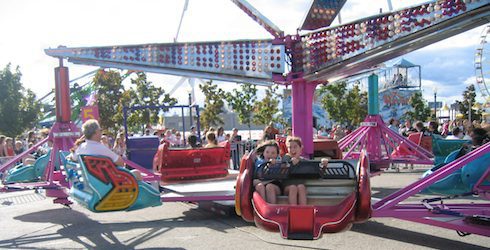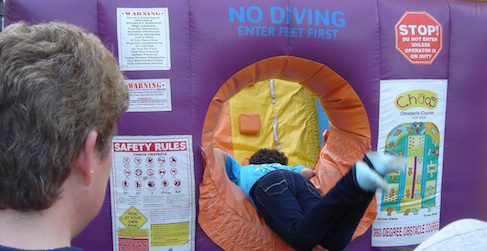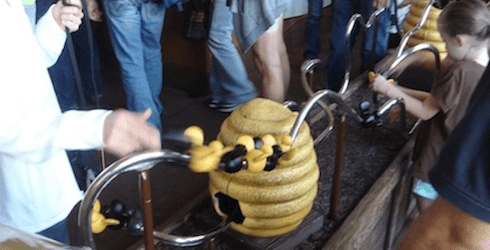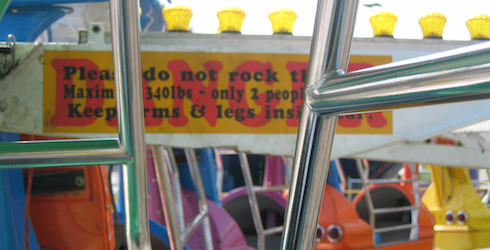Professor and researcher Dr Kathryn Woodcock shares her thoughts on the role of guests in amusement ride safety and human factors in attractions design
Published in Attractions Management 2017 issue 4
Continue reading “Humanly possible”Kathryn Woodcock, PhD CCPE ICAE PEng
Professor
Professor and researcher Dr Kathryn Woodcock shares her thoughts on the role of guests in amusement ride safety and human factors in attractions design
Published in Attractions Management 2017 issue 4
Continue reading “Humanly possible”The worst thing that can happen at a theme park, amusement park, water park, or carnival is an injury to a rider. The rider and their family obviously are hurt worst, but the owner/operator and the entire industry shares the pain.
Many people work very hard to make sure rider injury does not happen, and because of the success of that effort, it rarely does happen. In the immediate aftermath, thoughts often go to negligence. Was the inspection skipped or shortcut? Did someone leave a part out? Did the rider bring it on themselves by misbehaving?
Continue reading “When the worst happens”Outdoor Amusement Business Association ShowTime 2012, August, p. 23.
As the July long weekend approaches, many families may be thinking about heading to an amusement park or summer festival for a fun day riding stomach-dropping roller coasters, Ferris wheels and spinning swings. Rides can be thrilling, and even a little scary, but most of the sensation of danger is a clever illusion.
Continue reading “Safety first when it comes to amusement rides”
TORONTO, June 26, 2012 – As the Canada Day long weekend approaches, many families may be thinking about heading to an amusement park or summer festival for a fun day riding stomach-dropping roller coasters, Ferris wheels and spinning swings. Rides can be thrilling, and even a little scary, but most of the sensation of danger is a clever illusion, says Kathryn Woodcock, an amusement ride expert at Toronto Metropolitan University.
Continue reading “Five amusement tips for kids: how not to have a bad day”
TORONTO, June 26, 2012 – As the Canada Day long weekend approaches, many families may be thinking about heading to an amusement park or summer festival for a fun day riding stomach-dropping roller coasters, Ferris wheels and spinning swings. Rides can be thrilling, and even a little scary, but most of the sensation of danger is a clever illusion, says Kathryn Woodcock, an amusement ride expert at Toronto Metropolitan University.
Continue reading “Safety first for amusement rides: tips for parents”
Are we on the right page when we are trying to prevent misuse in the public / consumer environment?
Statistics consistently show that amusement ride injury investigators identify human behaviour as antecedents to failure, including the omission of actions that were required, actions performed which should not have been, and actions that were not performed with sufficient speed and accuracy.
Continue reading “Behaviour malfunction”
Any service involves queueing, whether it is a doctor’s office or public transit. The queue is the area where you wait for service. Sometimes you are literally in a line and other times you are more of a herd, and sometimes you’re lucky enough to arrive at the point of service to find no one waiting (instabus!) but queueing is a fact of life. Waiting to ride an amusement ride typically involves a queue, and this becomes sort of the folklore or fiction of the activity.
Continue reading “In the queue”
Decision-making succeeds when the decision produces a desirable outcome and fails when it produces an undesirable outcome. Decision-making can fail when a person does not perceive, ignores, cannot understand, or gives improper weight to a piece of relevant information.
Continue reading “Decision making: words and meaning”A trip to a theme park or carnival is often the highlight for families and friends every year. Although amusement riders are rarely injured on rides, most investigation reports have found that the riders behaved incorrectly prior to the accident event. A Canadian researcher is looking to change this through her research on amusement ride safety.
Continue reading “Rider Behaviour: Keeping amusement rides safe and enjoyable”Woodcock, K., 2007. Rider errors and amusement ride safety: Observation at three carnival midways. Accident Analysis and Prevention 39, 390–397. Link
Continue reading “Paper: Rider errors and amusement ride safety: Observation at three carnival midways”